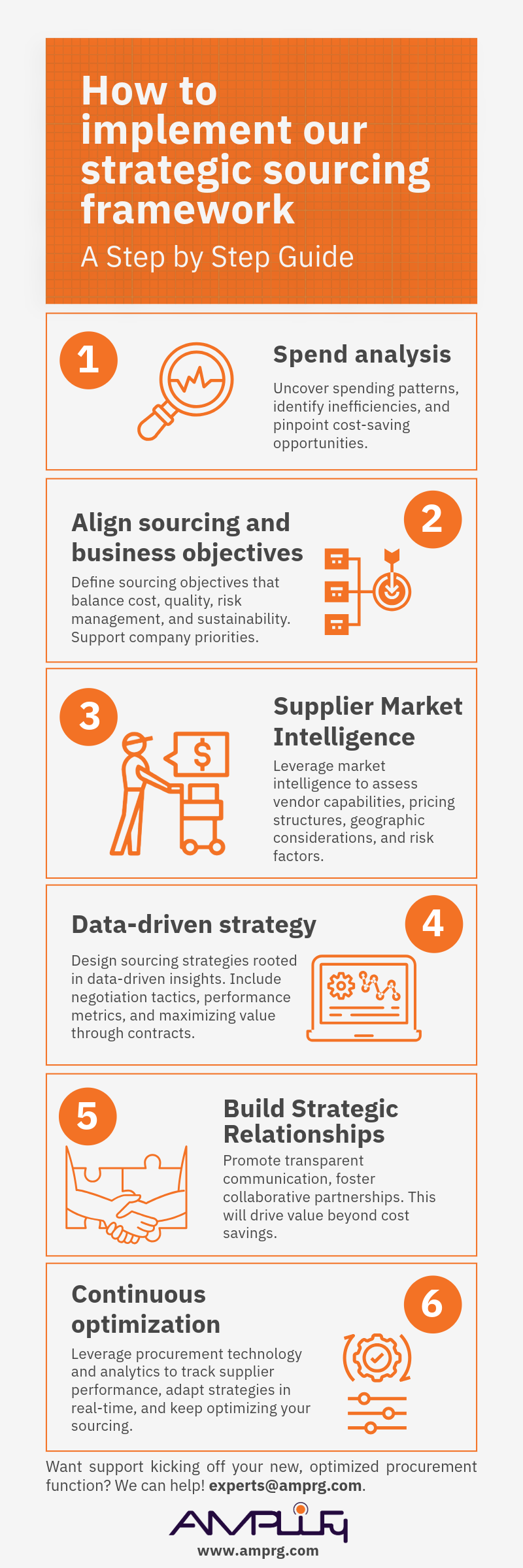Optimize your supplier selection - implement our strategic sourcing framework
Implement the ASTRA Framework:
Amplify
Strategic
Targeted
Resource
Acquisition
We believe that successful strategic sourcing requires a structured and a data-driven approach. Our Strategic Sourcing Framework provides procurement leaders with the tools to optimize supplier selection, mitigate risks, and drive efficiencies.
The following steps outline the key components of our proven methodology:
Step 1: Comprehensive Spend Analysis
Amplify’s framework starts with a deep dive into procurement data to uncover spending patterns, identify inefficiencies, and pinpoint cost-saving opportunities.
This process enables organizations to make informed decisions about sourcing priorities and supplier consolidation.
Step 2: Align Sourcing with Business Objectives
Strategic sourcing must be aligned with overall business objectives.
Amplify helps organizations define sourcing objectives that balance cost, quality, risk management, and sustainability, ensuring that procurement initiatives support broader company priorities.
Step 3: Supplier Market Intelligence
Amplify’s framework emphasizes thorough supplier research, leveraging market intelligence to assess vendor capabilities, pricing structures, geographic considerations, and risk factors.
This step ensures procurement teams engage with the right partners at the right times and for the right costs to ensure long-term success.
Step 4: Craft a Data-Driven Sourcing Strategy
Amplify supports procurement teams in designing sourcing strategies rooted in data-driven insights.
This includes defining negotiation tactics, setting up supplier performance metrics, and crafting contracts that maximize value while minimizing risk.
Step 5: Build Strategic Supplier Relationships
Effective supplier engagement is critical for long-term success.
Amplify’s framework promotes transparent communication, fostering collaborative partnerships that drive value beyond cost savings.
Negotiations are focused on mutual benefits, innovation, and sustainability.
Step 6: Continuous Performance Optimization
The final step in Amplify’s Strategic Sourcing Framework is ongoing monitoring and improvement.
Leveraging procurement technology and analytics, organizations can track supplier performance, adapt strategies in real-time, and drive continuous sourcing optimization.

Is Your Business Aligned for Success?
At Amplify, we help executive teams, boards, and decision-makers optimize strategy execution. Whether you’re refining your market approach or struggling with operational alignment, our tailored solutions ensure your strategies don’t just sound good—they actually support the broader mission of the organization.
📩 Let’s talk. Reach out today to explore how we can help your organization amplify its success.
Recent Posts



Recent Posts




